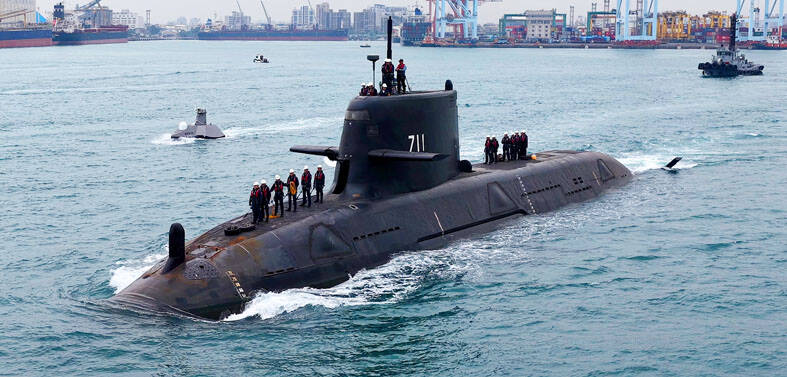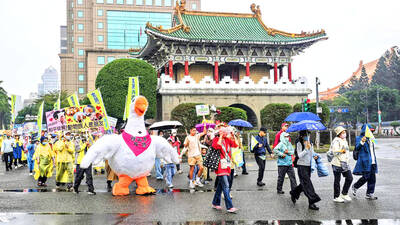A Taipei County official yesterday called on Chinese authorities to relax regulations that have limited the number of Chinese visiting Taiwan for tourism.
Chin Huei-chu (秦慧珠), director of the Taipei County Tourism Promotion Bureau, made the call in Xiamen, Fujian Province, where she is attending a travel fair.
A county government statement quoted Chin as saying strict Chinese regulations were responsible for the low number of Chinese who had visited Taiwan since the two sides launched cross-strait weekend charter flights in July.
Under the agreement, up to 3,000 Chinese could enter Taiwan per day, but less than 300 have come per day on average.
Chin said she saw the problems first-hand during her visit to Shandong last month to attend an international travel fair. Shandong is China’s second-largest province in terms of population, with 96 million people, and enjoys the second-largest GDP behind Guangdong.
Yet only one travel agency in the province was authorized to offer tours to Taiwan and the agency is limited to three tour guides for Taiwan trips, Chin said.
This means people must wait for a spot on one of the agency’s tours to Taiwan, she said.
Chin said she would ask the Straits Exchange Foundation (SEF) to suggest in talks with China’s Association for Relations Across the Taiwan Strait (ARATS) that Beijing authorize more local travel agencies to offer tours to Taiwan.
The Xiamen travel fair, organized by the Chinese National Tourism Administration and the Fujian provincial government, has attracted representatives from government tourism agencies and private tour companies from around China, as well as from countries in Southeast Asia, Japan, South Korea, Taiwan and the US.
Taipei County has a booth at the fair.
Meanwhile, Taiwanese and Chinese mail operators are calling for direct mail delivery across the Taiwan Strait.
“It takes five days to send an ordinary piece of mail from Taipei to Beijing because the mail has to go through Japan or Kong Kong,” Chunghwa Post vice president Huang Shu-chien (黃書健) said.
“The opening of direct mail delivery would halve the [delivery] time and cost,” he said.
Wang Yuci (王渝次), deputy head of China’s postal authority, also urged both sides to open direct mail delivery.

NUMBERS IMBALANCE: More than 4 million Taiwanese have visited China this year, while only about half a million Chinese have visited here Beijing has yet to respond to Taiwan’s requests for negotiation over matters related to the recovery of cross-strait tourism, the Tourism Administration said yesterday. Taiwan’s tourism authority issued the statement after Chinese-language daily the China Times reported yesterday that the government’s policy of banning group tours to China does not stop Taiwanese from visiting the country. As of October, more than 4.2 million had traveled to China this year, exceeding last year. Beijing estimated the number of Taiwanese tourists in China could reach 4.5 million this year. By contrast, only 500,000 Chinese tourists are expected in Taiwan, the report said. The report

Temperatures are forecast to drop steadily as a continental cold air mass moves across Taiwan, with some areas also likely to see heavy rainfall, the Central Weather Administration (CWA) said. From today through early tomorrow, a cold air mass would keep temperatures low across central and northern Taiwan, and the eastern half of Taiwan proper, with isolated brief showers forecast along Keelung’s north coast, Taipei and New Taipei City’s mountainous areas and eastern Taiwan, it said. Lows of 11°C to 15°C are forecast in central and northern Taiwan, Yilan County, and the outlying Kinmen and Lienchiang (Matsu) counties, and 14°C to 17°C

STEERING FAILURE: The first boat of its class is experiencing teething issues as it readies for acceptance by the navy, according to a recent story about rudder failure The Hai Kun (海鯤), the nation’s first locally built submarine, allegedly suffered a total failure of stern hydraulic systems during the second round of sea acceptance trials on June 26, and sailors were forced to manually operate the X-rudder to turn the submarine and return to port, news Web site Mirror Daily reported yesterday. The report said that tugboats following the Hai Kun assisted the submarine in avoiding collisions with other ships due to the X-rudder malfunctioning. At the time of the report, the submarine had completed its trials and was scheduled to begin diving and surfacing tests in shallow areas. The X-rudder,

DEMAND: The government should enact regulations in line with Austria and Germany to incorporate vegan nutrition into school meals, an advocate said More than 1,000 people yesterday marched in Taipei to promote veganism, calling for legislation to incorporate vegan diets into school lunches and the national net zero emissions program. Participants gathered on Ketagalan Boulevard in front of the Presidential Office Building for the march, which was organized by the Vegan Action Network (VAN). Former ambassador to Chad Chiu Chung-jen (邱仲仁), actor Yankee Yang (楊子儀) and actress Cindy Lien (連俞涵) attended the event. VAN member Marianne Chao (趙梅君) said that the campaign aimed to urge the government to promote vegan diets across schools and government agencies via legislation and national policies, which would help build